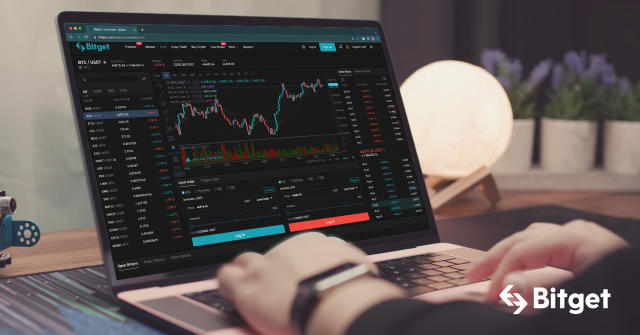Good Hints For Picking Automated Trading
Wiki Article
To Confirm The Reliability Of Your Method, Why Not Backtest It On Multiple Timeframes?
Backtesting a trading strategy across different timeframes is essential to test its credibility. Since different timeframes may have different opinions on market trends and price movements It is essential to test the strategy on several timeframes. Backtesting a strategy over multiple time frames allows traders to gain an picture of how it works in different markets. It also allows you to determine if the strategy is consistent and reliable over time. Strategies that work well in a daily timeframe may not be as effective when it is used in a monthly or weekly timeframe. The backtesting of the strategy can help traders identify the flaws in their strategy and make necessary adjustments. Backtesting on multiple timeframes has the advantage in helping traders choose the most suitable timeframe to implement their strategy. Backtesting on multiple timeframes can help traders identify the most suitable time frame. Different trading styles and frequency of trading could be preferred by traders. Backtesting on multiple timeframes provides traders with a better knowledge of the strategy's effectiveness and allows them to make more informed decisions regarding the reliability and consistency of the strategy. Follow the top rated forex backtesting software for more advice including automated forex trading, automated software trading, best crypto trading bot, algorithmic trading software, crypto backtesting, automated crypto trading, algorithmic trading software, rsi divergence cheat sheet, crypto backtest, best free crypto trading bots and more.

Backtesting On Multiple Timeframes Is An Efficient Way To Compute.
Although backtesting across multiple timeframes is more efficient for computation, it could be equally quick to backtest in one timeframe. Backtesting on multiple timeframes is necessary to ensure the strategy's reliability and to ensure that the strategy performs consistently under various market conditions. Backtesting with multiple timeframes is the practice of running the same strategy in various timeframes (e.g. daily, weekly as well as weekly and monthly), and then analysing the outcomes. This allows traders to get an accurate picture of the strategy's performance. It can also help identify weak points and inconsistent results. Backtesting for multiple timeframes could make the process more complex or increase time demands. There are trade-offs to be made between the benefits of backtesting on multiple timesframes, and the added computational and time requirements should be carefully considered by traders when testing multiple timesframes. This is due to the fact that it helps to determine the reliability of a strategy and ensure that it performs consistently in different market conditions. Backtesting multiple timesframes is a choice that traders should take into consideration the potential advantages in addition to the added computational time and complexity. Take a look at the most popular automated trading systems for more recommendations including what is backtesting in trading, how to backtest a trading strategy, algorithmic trading crypto, emotional trading, crypto trading strategy, are crypto trading bots profitable, rsi divergence, algorithmic trading platform, crypto trading bot, crypto futures and more.

What Are The Backtest Considerations For Strategy Type, Elements And Trades?
There are a variety of important factors to consider when testing a trading strategy. This includes the type of strategy, strategy elements, and the amount of trades. These aspects could affect the outcomes of backtesting, and must be taken into consideration when evaluating the strategy's performance. Strategy TypeDifferent strategies for trading such as trend-following and mean-reversion have different market assumptions and behaviors. It is essential to consider carefully the kind of strategy you're backtesting and to use historical market data that is appropriate for the strategy.
Strategies Elements- These elements such as the rules for entry and departure, position sizing and risk management can influence the outcomes of backtesting. When evaluating the effectiveness of a strategy it is crucial to take into account the entire strategy and make changes as needed to ensure the strategy remains reliable and secure.
Number of Trades The number of backtests will also affect the results. While a lot of trades may provide a better view of the strategy's performance than less but it could also add to the computational demands of the backtesting procedure. While a smaller number of trades will facilitate simpler and faster backtesting, they may not provide an accurate view of the strategy's performance.
Backtesting a trading method involves looking at the type of strategy, its elements, and the number of trades that were executed to ensure reliable and accurate outcomes. These factors can help traders evaluate the strategy's effectiveness and make informed decisions regarding its validity. Check out the top backtesting software free for blog recommendations including online trading platform, what is algorithmic trading, free crypto trading bot, which platform is best for crypto trading, algo trading platform, forex backtest software, best cryptocurrency trading bot, crypto trading backtesting, algorithmic trading strategies, stop loss order and more.
What Are The Key Criteria To Determine Equity Curve And Performance?
There are several key criteria which traders may use to evaluate the trading strategy's effectiveness by backtesting. This could be based on the equity curve, as well as performance indicators. The amount of transactions can also be used to decide whether the strategy is effective or not. Equity Curve- The equity curve shows how a trading account has grown over the course of time. It's a key indicator of a trading strategist's performance, as it provides an insight into the general trend. The strategy can meet this test if the equity curve shows consistent growth over time, with very little drawdowns.
Performance Metrics - Traders can consider other performance metrics as well as the equity curve when evaluating the effectiveness of a trading strategy. Some of the most commonly utilized metrics are Sharpe ratio, profit ratio maximum drawdown, average duration of trade. If the metrics of performance for the strategy are within acceptable limits and show consistent and reliable performance during the backtesting time the strategy may meet the test.
The number of trades generated by a strategy's number of executed trades in its backtesting time is a crucial factor in evaluating its performance. This test is satisfied when a strategy has enough trades over the time frame of backtesting. This will give a more detailed view of the strategy's performance. But, it's crucial to keep in mind that a high number of trades doesn't necessarily suggest that the strategy is successful, as other factors like the quality of trades must also be considered.
When backtesting a trading strategy It is crucial to look at the equity curve and performance indicators, as well as the number of transactions. This will enable you to make informed choices regarding its robustness and reliability. These indicators help traders analyze their strategies and then make adjustments to enhance their performance.
